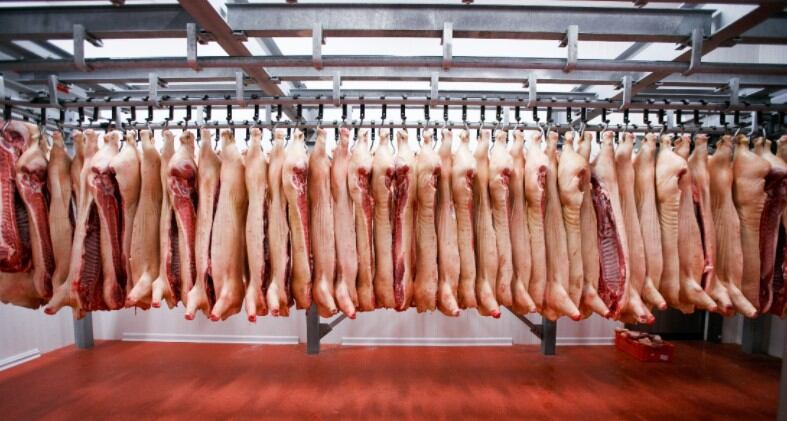The method uses an enzyme extracted from the papaya fruit to separate protein from pig blood. The enzyme can also be used to separate iron from the blood that can be used in food supplements.
By using the researchers' method, the team thinks that 5,000 tonnes of pure protein powder can be extracted from 60,000 tonnes of blood.
“We are increasing production sustainability by taking advantage of pig blood as a protein source for human consumption,” says Rene Lametsch, Associate Professor and head researcher at Copenhagen university.
“It is likely that a growing number of people will satisfy their protein needs in the future through alternative food sources, for the sake of CO2 emissions and due to food shortages."
The team, which includes researchers from China Agricultural University, highlight the meat industry’s huge annual production of raw materials with high-quality proteins and low economic value.
Porcine blood is a good example as slaughter byproduct, with haemoglobin accounting for 60–70% of the blood protein.
Enzymatic hydrolysis can be used to recover the protein-containing part from haemoglobin, and also help separate the globin and heme groups, reducing the dark red colour and the metallic taste of hydrolysates.
However, the overall flavour of hydrolysates is still undesirable for food applications and thus there is a need to improve its taste as a possible food ingredient.
Study details
To improve hydrolysate flavour from porcine haemoglobin and meat, the research team used the enzyme γ-glutamyltranspeptidase (GGT) from the non-pathogenic soil bacterium Bacillus amyloliquefaciens
Quantitation of free amino acids and γ-glutamyl dipeptides was carried out in combination with sensory analysis.
Due to the higher amount of glutamine present in meat hydrolysates, γ-glutamylated hydrolysates from meat contained higher concentrations of γ-glutamyl dipeptides.
The team also found that for hydrolysates from both raw materials, extra addition of glutamine (10 and 20 mM) was beneficial for obtaining higher concentrations of γ-glutamyl dipeptides.
“We have tested the powder in a chocolate bar, as well as in meatballs served to people 65-years-old and up, with positive results,” says Professor Lametsch.
“Older people can have a tough time getting enough protein in their diets as they begin to eat less at the exact same time that their bodies need additional protein."
Industry involvement
The study, which forms a series of closely linked research, is now looking to industry willing to launch a product with pig blood protein in it.
"Our research is done. The next step is in the hands of the industry. We need a partner that can move this to market," adds Professor Lametsch,
"A bold industrial investor must be willing to test this with consumers. Protein from pig’s blood faces the same challenge as with insects. People try it, and think of it as exciting, but it takes time to get used to."
The professor identifies China as a prime export market citing Danish pork as a highly valued meat by the country.
Additionally, the Chinese market has the potential to absorb all 5,000 tonnes of the Denmark’s annual pig protein production.
Source: J. Agric. Food Chem.
Published online: doi.org/10.1021/acs.jafc.0c04513
“Production of Taste Enhancers from Protein Hydrolysates of Porcine Hemoglobin and Meat Using Bacillus amyloliquefaciens γ-Glutamyltranspeptidase”
Authors: Qian Li et al.

